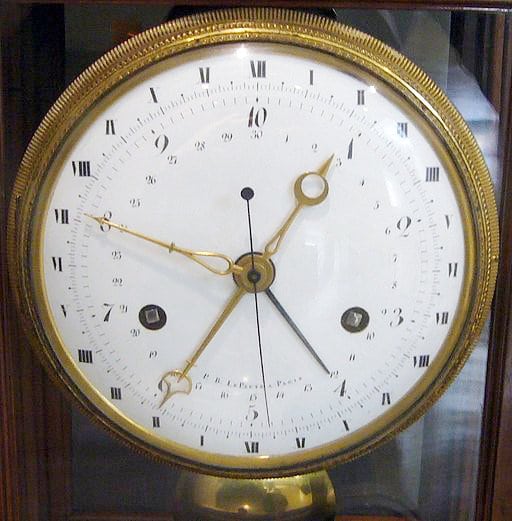


Each month consisted of 3 ten-day periods. The point is that this kind of clothing had only been in use by the bourgeoisie and the noblemen, whereas the urban poor were unable to buy and wear them. These extra days were called «the Sansculottides», after «sans-culottes» - the revolutionary-minded masses, - which literally meant «without knee-breeches». 12 months were followed by 5 (in regular years) or 6 (in leap years) complementary days in a row. The year of the French Republican Calendar consisted of 365 or 366 days, divided into 12 months, the length of each month was exactly 30 days. Charles-Gilbert Romme (1750–1795) was one of the active members of the French Revolution and author of the French Republican Calendar. Pierre Marechal (1750–1803) was a well-known French revolutionary-atheist at the end of the XVIII-th century. The French Revolutionary Calendar actually had a prototype, that is the so-called «Almanac of honest people», a book written by Pierre Sylvain Marechal and published in the beginning of 1788. One day earlier, on September 21 st, the monarchy was abolished as the political system of France, and state power was passed to the Consul Napoleon Bonaparte from the French king Louis XVI. On September 22 nd, 1792 the French First Republic (République française) was proclaimed, so this date is considered to be the beginning of both the Republican Era and the French Republican Calendar. It was used from 24 November 1793 to 31 December 1805 (inclusive) on 1 January, 1806, it was abrogated by Napoleon. The French Revolutionary Calendar, or French Republican Calendar, was introduced in France by the Decree of 5 October 1793, AD. Russian Empire (alphabetic dates on the coins of Peter the Great).Nepal (Bikram Samvat era VS, Saka era SE) also works for coins minted by some Indian Princely States:.Myanmar (also Burma, or officially the Republic of the Union of Myanmar.Lunar Hejira (most of the present-day Arab countries: Egypt, Tunisia, Syria etc also works for Indian Mughal coins).Korean Empire (1888–1910: decline of the Empire Gojoseon dating).Julian calendar (also calculation of date after the founding of Rome, as well as Julian day calculation).Iran (including the Solar Hejira and the monarchial calendar system).Haiti (the revolutionary chronological system in the XIX-th century).Georgia (the first third of the 19 th century) - country in the Caucasus, not the U.S.French Revolutionary Calendar (also known as French Republican calendar).Chinese Empire (cyclical calendar) (Qing Dynasty machine-struck coinage: late XIX – early XX centuries).


 0 kommentar(er)
0 kommentar(er)
